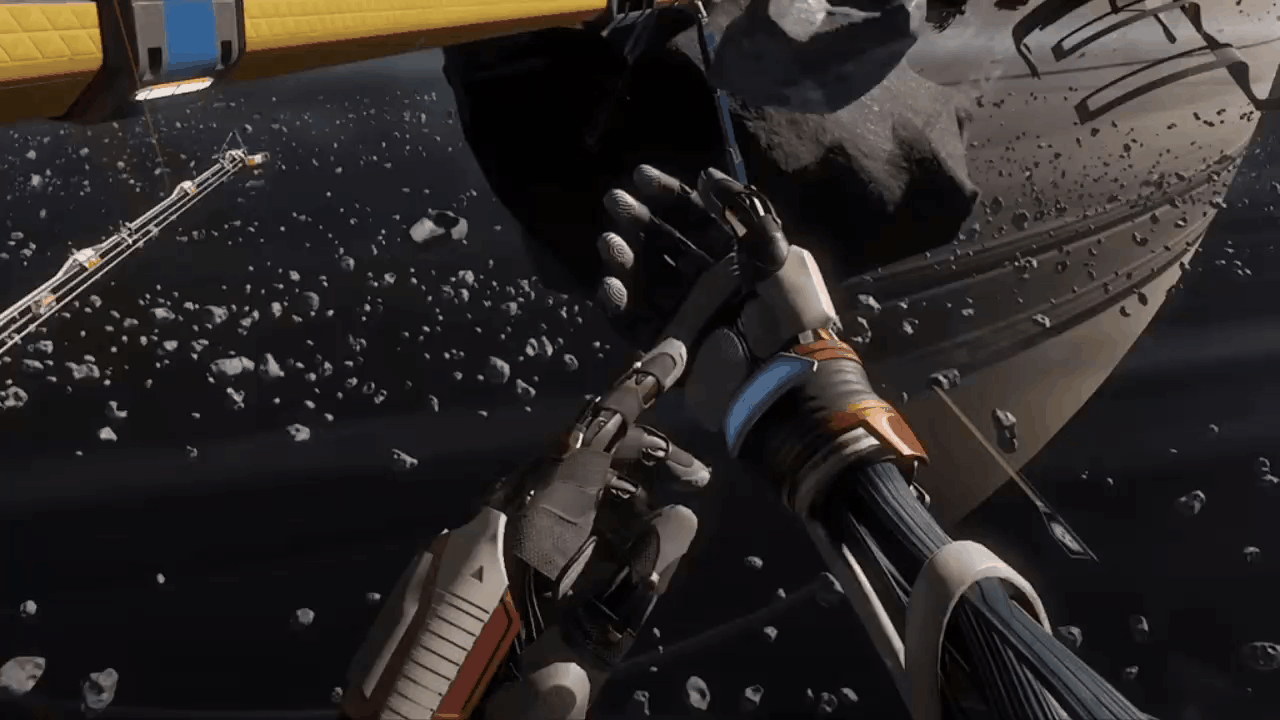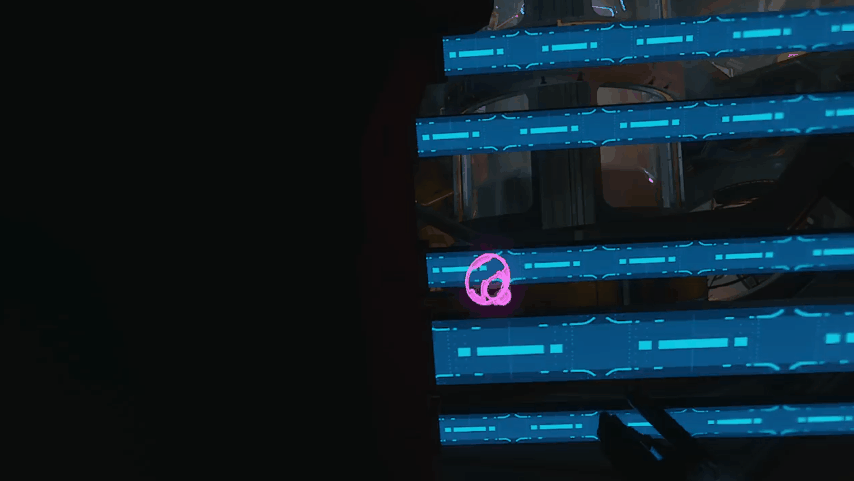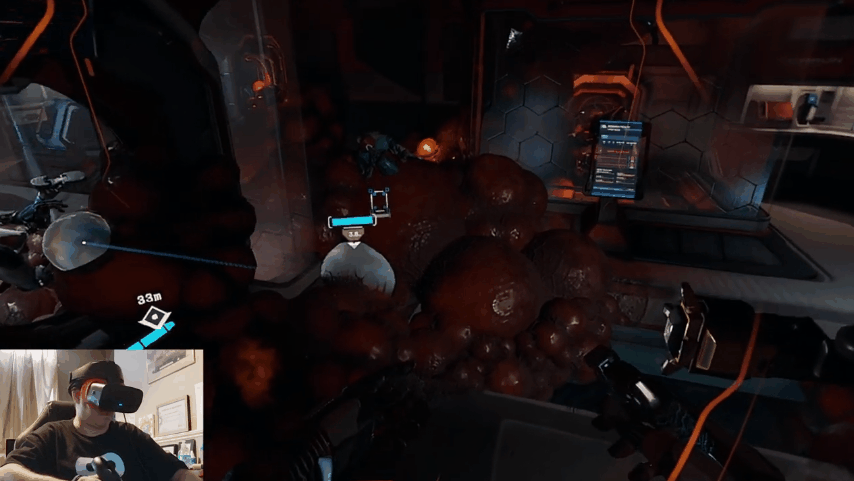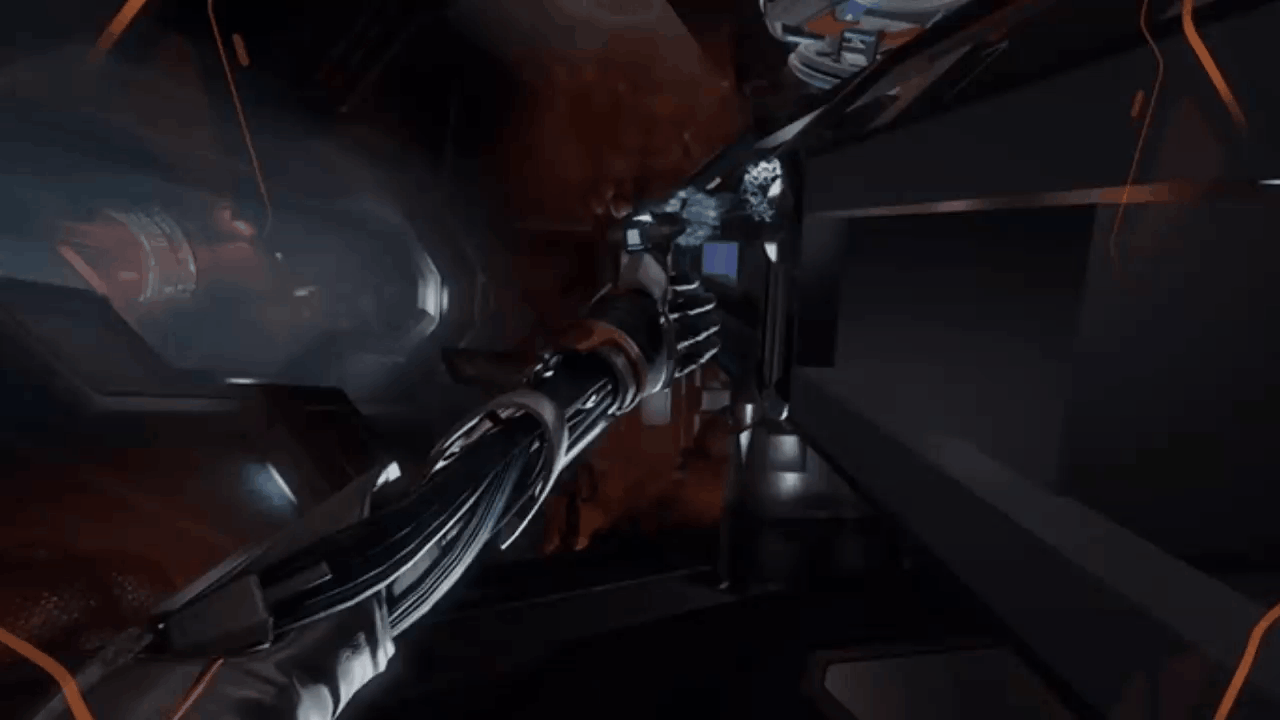Lone Echo 2
Player Tools - Owned the tools the player owned and the interface for selecting them—which in VR where the directors dictated a high level of immersion with absolutely minimal “gaminess”— this was quite the challenge. Worked with concept artists, directors, animators, prop artists to coalesce each tool into a cohesive experience. All implementation (including programming) was done by me, including aim assist and other invisible assistance features. I also just owned the player entities and made sure all their components and models functioned correctly.
Player Tools (Scanner and Cutter) - These were two “player tools” that were ported over from the first game. The cutter was straightforward port, the scanner was a simplification and a redesign of it’s interface. The first game had a really high labor burden creating flavor text for each material so in the second game we simplified it to a distanced interact.
Player Tools (Cloak Emitter) - The first wholly new tool for Lone Echo 2. We wanted to integrate into the power system and effect the new “tick” enemies. I had the original idea for the tool and took it all the way from initial concept to final shipping state (UI included). Also made the associated “web” level mechanic and worked with environment artists to get that online as well
Player Tools (Grip Projector) - During pre-production there was an ambient desire for some form of remote manipulation. So a lot of iterating and playtesting went on to get some form of “1-to-1” (ish) manipulation. Ultimately became a very fun and systemic tool.
Player Tools (Guns) - I worked on porting the assault gun from Echo Combat and improving it with extra vfx and hit reactions for a single player game. Also created the endgame “cure gun” or “Counter Pulse Emitter” and worked with animation, sound and VFX to make sure that both guns felt very different as fictionally they are doing vastly different things.
Progression and Upgrade System - The directors wanted a systemic reward for side content, but wanted it to fit in the tight fictional constraints of the game: the player gets a new body every time they respawn, and it had to be “hard sci-fi.” So I conceived and pitched “research data” as a collectible and created the systems so that the front end would be cool realistic numbers, but the system would operate on easy-to-understand integers. I created the code and design interface for the entire progression system and supported the UI designers to make sure they had the data they needed. I also coordinated with the level designers who placed the loot pickups, and managed the systemic data on my end.
Pre-Production Rapid Prototyping - During the pre-production phase aggressively made a bunch of prototypes, pitched, implemented, and iterated on them. Had the hard conversations of which to keep and which to develop. Beyond the ones that made it into the finished game above there were other scrapped prototypes: interactable VR “metroid”-style map, AR pen to mark up the map and the environment, grenades, BOTW/Immersive Sim style “chemistry engine” or “stimulus system”





